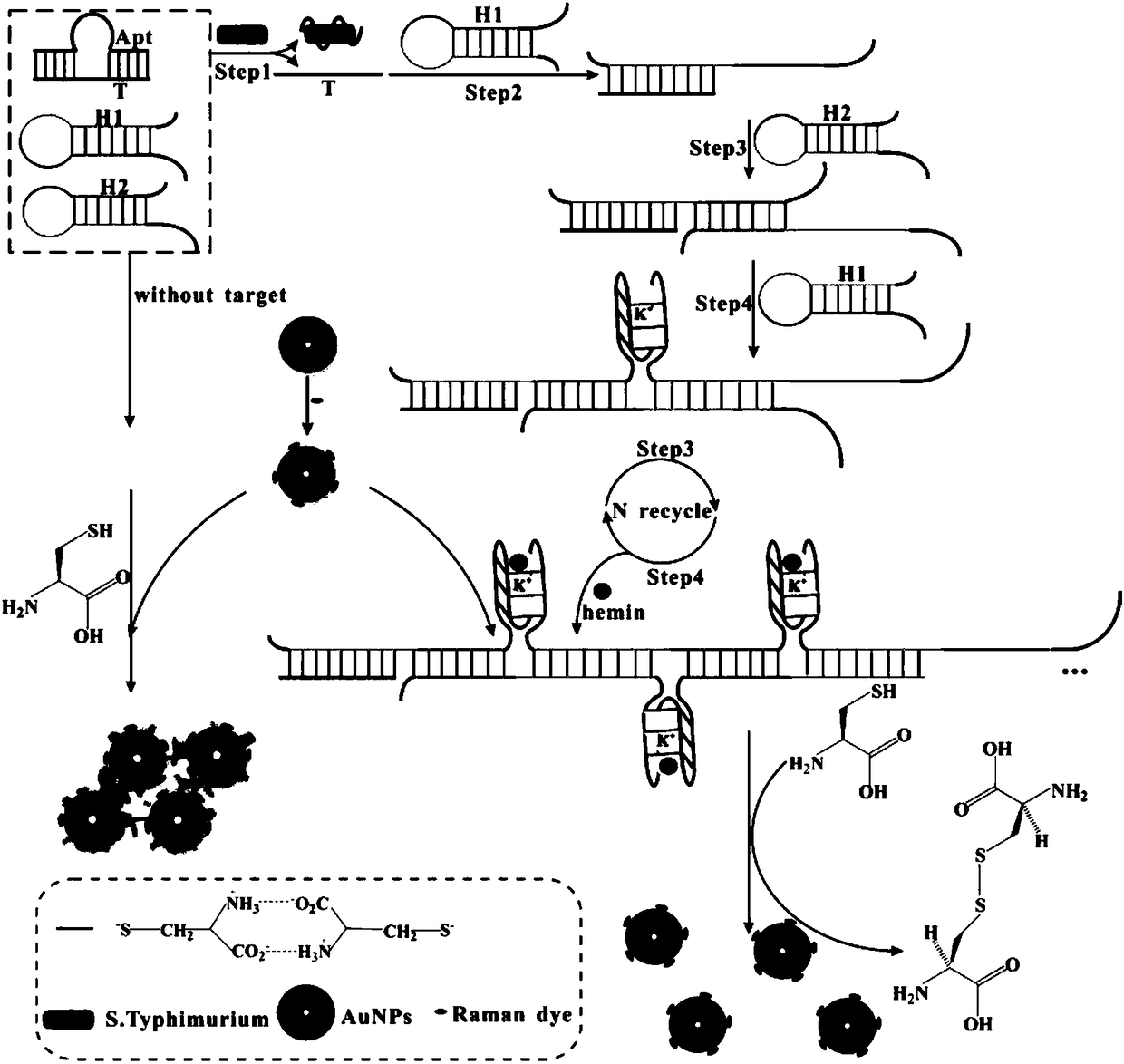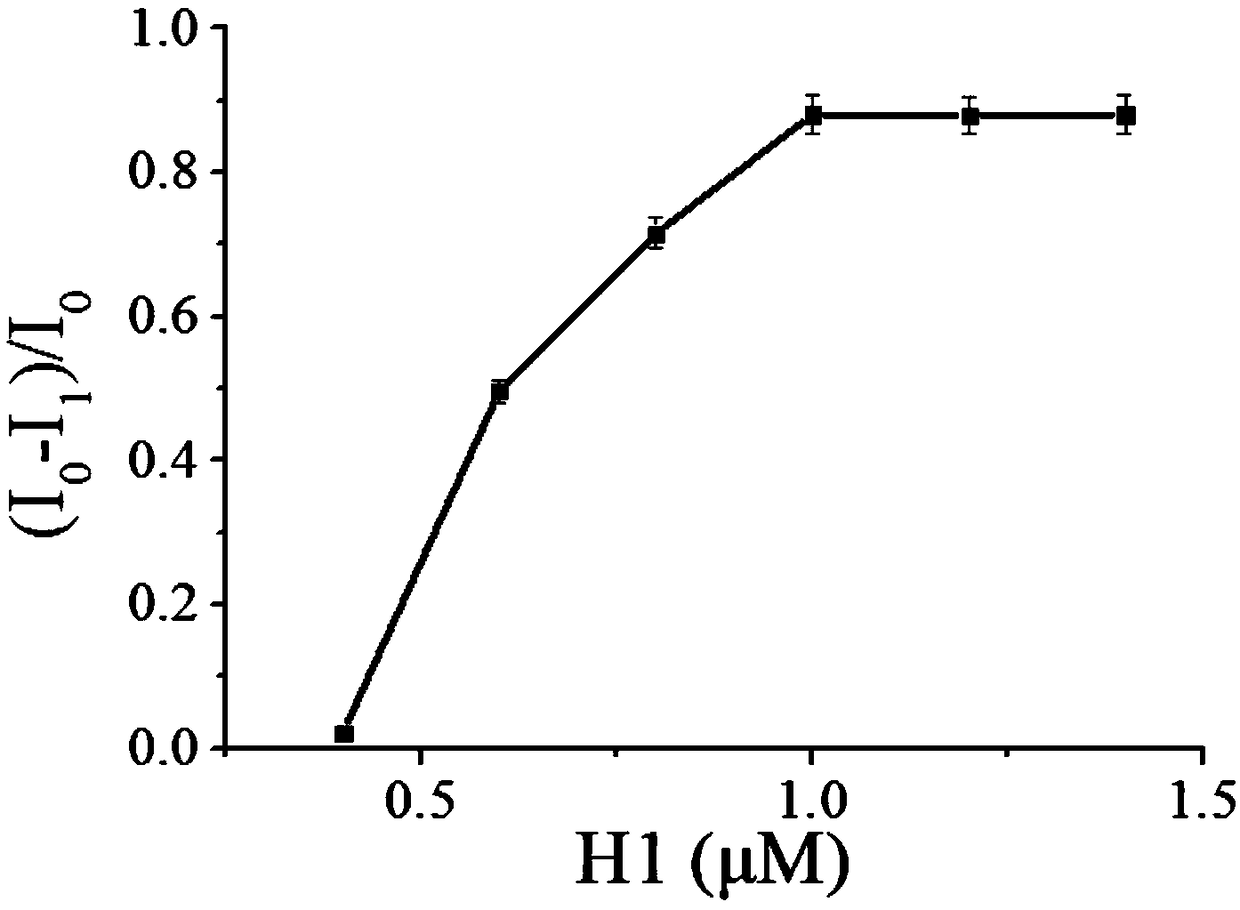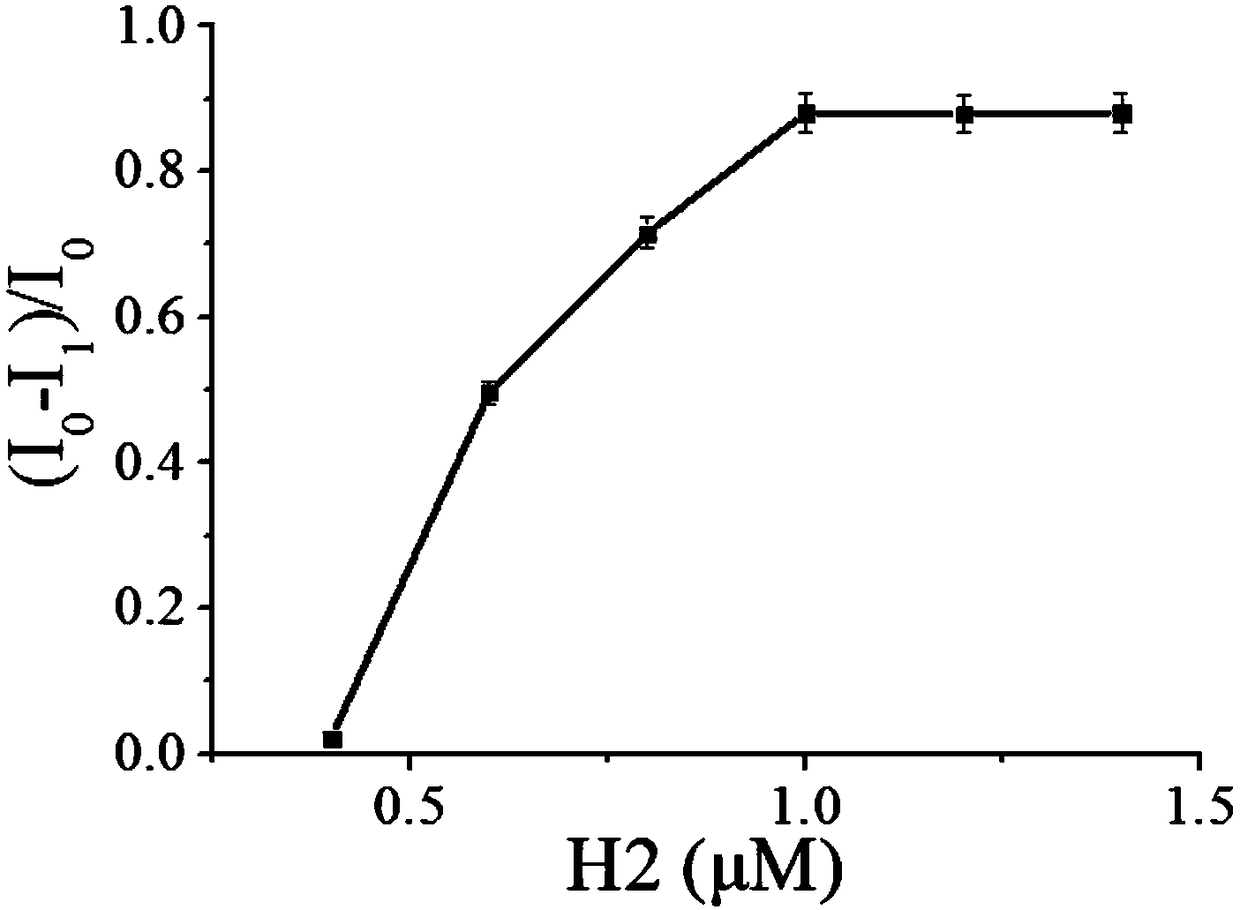Biosensor for detecting salmonella
A biosensor and Salmonella technology, applied in the field of biosensors, can solve the problems of high cost, long detection period, low specificity and sensitivity, etc., and achieve the effects of simple operation, short detection period and improved sensitivity
- Summary
- Abstract
- Description
- Claims
- Application Information
AI Technical Summary
Problems solved by technology
Method used
Image
Examples
Embodiment 1
[0041] Example 1 Preparation of nano gold.
[0042] (1) Add 200ml of ultrapure water into the three-neck flask;
[0043] (2) Take 500 μL of HAuCl with a concentration of 0.04g / mL 4 In the centrifuge tube, add 200ml ultrapure water, stir and heat to boil, stirring speed 450rpm;
[0044](3) Under stirring conditions, take 3ml of 1% trisodium citrate solution and quickly add it to the solution in step (2). The color of the solution changes from light yellow to wine red. After continuing to heat for 15 minutes, remove the heat source and Slowly cool to room temperature, and store at 4°C for later use.
[0045] According to the absorbance value at 530nm, the concentration of gold nanoparticles in the above solution is about 0.3nM.
Embodiment 2
[0046] Example 2 Preparation of gold nanoparticles modified with Raman dyes.
[0047] Take 2 mL of nano-gold solution in a centrifuge tube, centrifuge at 10,000 rpm for 10 min, remove the supernatant, disperse the bottom precipitate into 600 μL of sterilized water, and concentrate the nano-gold solution to 3 nM. Transfer to a 1 mL glass bottle and seal with tinfoil.
[0048] Take 12 μL of DTNB solution with a concentration of 50 μM and add it to the solution treated in step 1, and continue to shake in a mixer for 1 h.
[0049] The resulting solution was centrifuged at 10,000 rpm for 10 min, the supernatant was removed, and the bottom pellet was redispersed into 2 mL of sterilized water. This process was repeated three times to remove excess dye. After the final centrifugation, DTNB-modified gold nanoparticles were dispersed into 600 μL of PB buffer (10 mM, pH 7.4), and stored at 4 °C for future use.
Embodiment 3
[0050] Example 3 Effects of different H1 concentrations on the detection of Salmonella.
[0051] (1) Add 14 μL sterilized water, 2 μL 5×PBS, 2 μL 100 μM Apt chain and 2 μL 100 μM T chain into the pre-prepared sterilized EP tube, shake for 30s, and incubate at 95°C After 5 minutes, slowly cool down to room temperature and hybridize into probes, and store at -20°C for use.
[0052] (2) Add probe (4 μL, 10 μM), H1 (2 μL, final concentrations are 0.4 μM, 0.6 μM, 0.8 μM, 1.0 μM, 1.2 μM, 1.4 μM), H2 (2 μL, 20 μM), 5×PBS ( 3 μL) and 3 μL Salmonella suspension (10 5 cfu / mL) into a centrifuge tube, shaken for 30 s, and placed in a 37°C water bath for 30 min.
[0053] (3) Take the reacted solution out of the water bath, add nano gold solution (10 μL) of modified DTNB, cysteine (2 μL) and 4 μL heme (final concentration is 1 μM), and put it in a 37°C React in a water bath for 1 h.
[0054] (4) The reaction solution in step (3) is scanned by a Laboram010 laser confocal Raman spectro...
PUM
 Login to View More
Login to View More Abstract
Description
Claims
Application Information
 Login to View More
Login to View More - R&D
- Intellectual Property
- Life Sciences
- Materials
- Tech Scout
- Unparalleled Data Quality
- Higher Quality Content
- 60% Fewer Hallucinations
Browse by: Latest US Patents, China's latest patents, Technical Efficacy Thesaurus, Application Domain, Technology Topic, Popular Technical Reports.
© 2025 PatSnap. All rights reserved.Legal|Privacy policy|Modern Slavery Act Transparency Statement|Sitemap|About US| Contact US: help@patsnap.com



